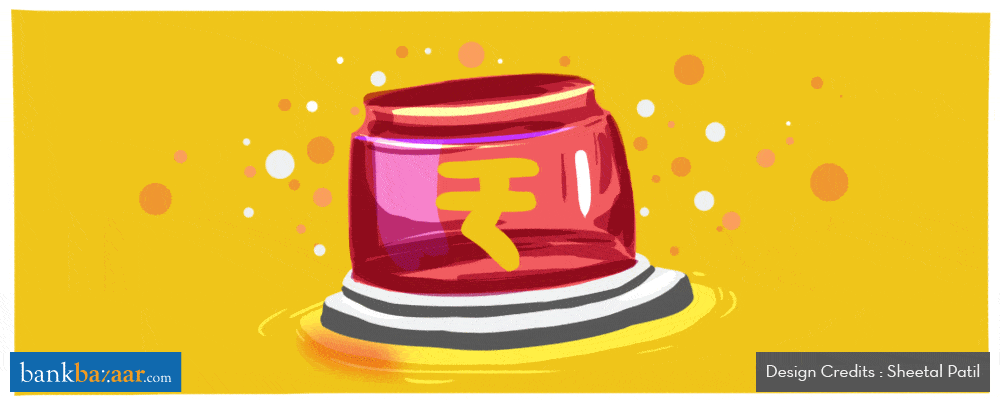Although there are many options to stack your emergency cash, you should choose an investment option which is easily accessible. Here are a few such options.

The current pandemic has taught each of us many key life lessons. But the biggest one surely is the importance of sound financial planning and always having enough funds stocked up for times when life is literally giving you lemons.
A sudden lay-off, an unexpected illness that hampers your ability to work or even a sudden disability – these are just a few scenarios that could catch you by surprise. And they come with some really nasty financial consequences like massive Credit Card bills, pending EMIs and other bills, and more.
But, don’t let the hard times in life get the better of you! Start an emergency fund so you’re well-prepared financially for anything that life throws at you.
Additional Reading: Ways To Pay Your Credit Card Bill
What exactly is an emergency fund?
To put it simply, it is basically a stash of money that you keep aside for any unannounced financial shortfalls that may come your way. Ideally, you should aim to save 6 months’ worth of expenses at the very least. However, this can vary from individual to individual.
Why build an emergency fund?
The entire purpose of building an emergency fund is to cushion you against any unexpected financial situations. It should act as your financial safety net when things go awry. In addition, if you have an emergency fund, you won’t have to worry about racking up all kinds of debt or depend on your friends or loved ones when you’re short of funds.
Additional Reading: Why Do You Need An Emergency Fund?
Where can you keep your emergency fund?
Although there are many options out there that can help you stack your emergency cash, you should choose an investment option that is easily accessible.
Try not to concentrate on the returns while choosing an appropriate option to park your contingency fund. Also, just because the fund is easily accessible, don’t be tempted to withdraw it for everyday expenses.
Additional Reading: 3 Step Guide For A Safer Investment
Here are a few investment options to park your contingency fund:
Savings Account
This is a popular means to store your cash. Not only is it easy to operate, it is also easily accessible. You can withdraw money anytime using your Debit Card provided by your bank. Just make sure that you know the daily cash withdrawal limit of your bank beforehand. Savings bank account interest rates usually range from 4% to 6%.
Additional Reading: What Is A Minimum Balance Savings Account?
Auto-Sweep Savings Account
Not happy with the interest rate offered by a Savings Account? You can invest in an Auto-Sweep Savings Account then. An Auto-Sweep Savings Account parks excess funds in a Fixed Deposit, which attracts higher returns that usually range from 6% to 8%.
However, accessing the money in an Auto-Sweep Savings Account isn’t as easy when compared to a regular Savings Account.
Additional Reading: Have You Tried Fixed Deposit Sweep-In Yet?
Fixed Deposit
If your bank doesn’t have a sweep-in account facility, then you can opt for a Fixed Deposit account that can be broken at short notice. You get the same return rate as auto-sweep or sweep-in accounts. However, you may have to visit the bank during withdrawal if your bank doesn’t provide online access.
Liquid Funds
Another convenient option to stack your emergency cash is in a liquid fund. A liquid fund gives you decent returns, has no lock-in period and is easily accessible. Most fund houses offer liquid funds with ATM cards, so you can withdraw money easily (Reliance Mutual Fund is an example). However, for liquid funds without an ATM card option, it may take a day to redeem your cash unless there’s an online facility to easily transfer funds into your savings account.
Additional Reading: Liquid Funds – Quick Money When Needed
Short-Term Debt Funds
You could also park your emergency fund in short-term debt funds. These funds provide decent returns. You can apply for money withdrawal online, but the only drawback is that the money will only reach your bank within 1 or 2 working days.
Additional Reading: The Highway To Profitability – Short-Term Debt Funds
Last but not least, do not forget to review your contingency kitty at least once a year. Also, ensure that you replenish it regularly so you have enough cash stocked up to easily tide over emergency financial situations.